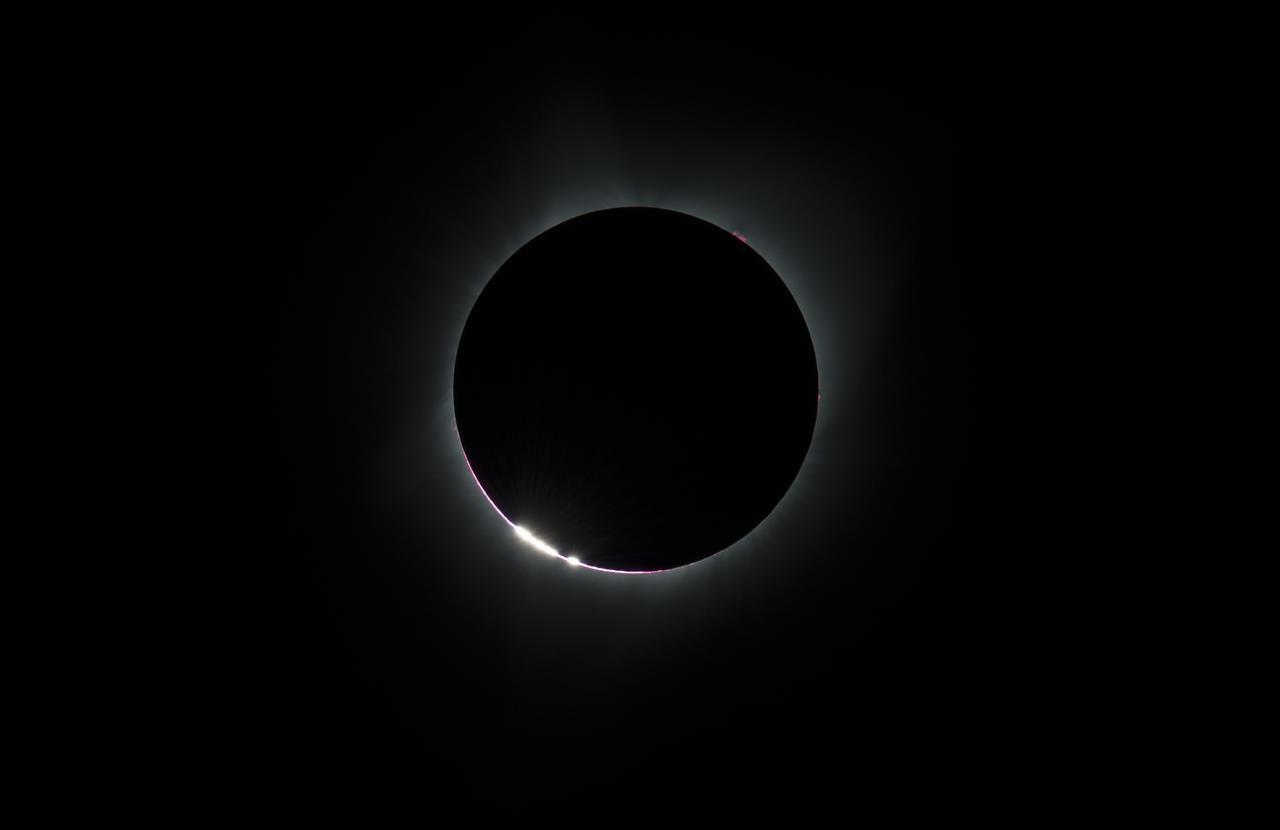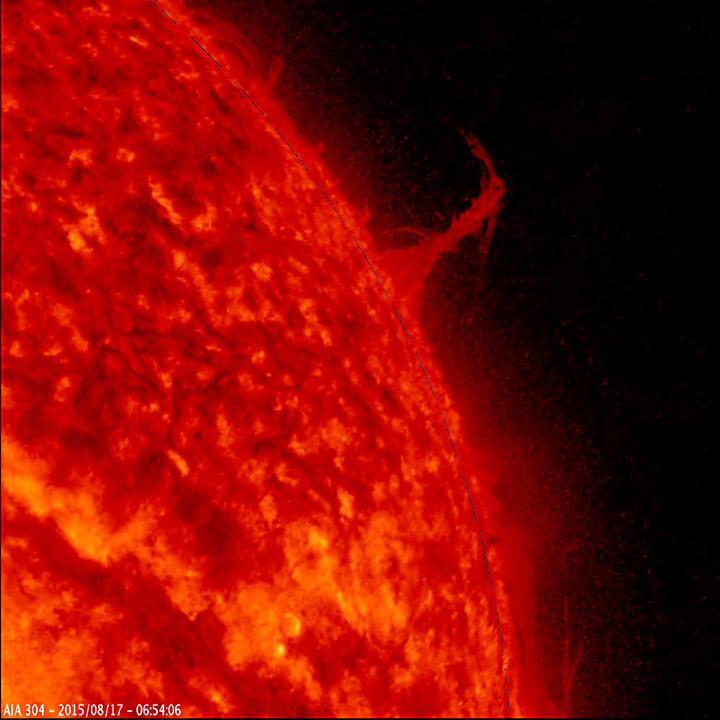You, Science, and the Sun: Be a Citizen Scientist During the April 8 Eclipse!
- By AMS Staff
- Mar 15, 2024
2017 solar eclipse
Did you know that you can observe the wonder of the upcoming April 8 solar eclipse AND make an important contribution to science at the same time? The 2024 AMS Weather Band Jamposium webinar, “Eclipse 2024: Solar Science in Action,” highlighted citizen science projects taking place on eclipse day as part of the Heliophysics Big Year, a global celebration of solar science. These opportunities will allow anyone in the path of the eclipse to learn about solar science and contribute potentially groundbreaking data.
Why do we need these projects? Don’t we have a lot of researchers and instruments observing the sun all the time?
We do, but citizen science offers an advantage: Lots of people means lots of observations. Combining data from volunteers all along the eclipse track can create much richer fields of information—capturing what’s happening from many different angles at many different points in time, all for much less expense.
Here’s some highlights mentioned during our recent webinar! Some of the projects require you to be in the path of totality, where the moon will completely block the sun from view for a few minutes. To participate in other projects, you just have to be able to view the partial eclipse.
Revealing the Shape of the Sun: SunSketcher
The SunSketcher app, developed by NASA, allows anyone with a smartphone in the path of totality to contribute to an important project. According to Gordon Emslie, Professor of Physics and Astronomy at Western Kentucky University, SunSketcher “will be used to make the most precise determination ever of the size and shape of the sun. [That] will tell us things about the flows within the sun that dictate the outer surface shape—and believe it or not, [allow us to] test competing theories of gravity.”
The project focuses on “Baily’s beads”—spots of light that show just before and after totality, as the edges of the moon and sun appear to align. These beads correspond with valleys on the moon’s surface, divots where sunlight shines through. Smartphone shots from volunteers—automatically taken milliseconds apart by the app—will show exactly when and how these lunar features interact with sunlight during the eclipse.
“By accurately recording how many beads you see and when they appear and disappear, we can get very precise information, to within a few parts per million, on how big the sun is,” Emslie said during the webinar. “You will not get beautiful pictures [but] it’s not the quality of the images that matters: it’s the timing of these little flashes of light on and off.” The need for many images taken at different places and times means that “SunSketcher can only be done using citizen science observations. … every observation is unique.”

Baily’s beads showing during the 2017 total solar eclipse (bright spots at bottom left of eclipse). Photo credit: NASA.
Just download the app, set up your phone with a view of the sun, and SunSketcher will do the rest on the day. You won’t need an internet connection during the eclipse itself—the app will store the pictures it takes, and, with your consent, will send them to the server once you’re back online. Sign up for updates to find out when the app is available to download, or view their video to learn more!
Studying the Corona: Eclipse Megamovie 2024
The Eclipse Megamovie 2024 Project studies solar plasma jets and plumes—ejections of plasma in the sun’s atmosphere—also known as its corona. During eclipse totality, the corona can be photographed from Earth’s surface in visible wavelengths of light (white light). If you have an interchangeable lens digital camera (for example, a DSLR or mirrorless camera), you can sign up here to take photos during totality.

A solar plasma plume captured in 2015. Image credit: NASA/GSFC/Solar Dynamics Observatory
Dr. Laura Peticolas, Associate Director of EdEon STEM Learning at Sonoma State University, discussed the project during the Jamposium session. “NASA has a phenomenal suite of observatories out in space,” she noted. However, “When you take cameras out into space on satellites and you try to image the corona … there can be a little bit of wobble in the satellite itself, and there’s diffraction around discs that … block photospheric light [and which] have to be bigger than the apparent diameter of the sun. That means you have to block the inner corona when you’re out in space. NASA could do [this work, but] it would just cost so much money, and so this gives us an opportunity to fill in that gap with white-light imagery.”
Sketching the Ionosphere: HamSCI
HamSCI is a collective of university researchers collaborating with amateur radio users on scientific investigations. Ham radio lets you communicate on frequencies that don’t just go in a straight line: The signals can travel up to an electrified layer of the upper atmosphere, called the ionosphere, then get refracted back to earth. This lets you communicate all the way around the globe.
In what’s called the F region of the ionosphere, energy from the sun ionizes atmospheric particles, creating an electrified gas that causes radio signals at certain frequencies to refract back to Earth. When the sun goes away—during the night or during a solar eclipse—that ionization stops, and the radio signals will change. Users on some frequencies lose the frequency completely, while others can communicate at farther distances than ever.
“Ham radio operators aren’t going to be looking at the eclipse with their eyes or with cameras,” said Dr. Nathaniel Frissell, Space Physicist and Electrical Engineer at the University of Scranton. “We’re going to be remotely sensing how it affects the upper atmosphere using our radio waves. And this works even if you’re not directly under the eclipse path, and even if it’s cloudy out.”
During HamSci’s 2024 April 8 Festival of Eclipse Ionospheric Science, they will run numerous events—for example, parties and contests for ham radio operators all over, seeing who is able to make contact with whom at different points during the eclipse and using that information to better understand the physics of the atmosphere and radio signals; and working with users of Personal Space Weather Stations to measure shifts in radio frequencies and the location of the ionosphere. Go to HamSCI.org to learn about all these experiments and find out how to get involved or observe.
Watch the Webinar
Our webinar delved into three projects, but there's so much more happening in the citizen science world around the eclipse! Here's one example from NASA:
Mapping the Eclipse's Weather Effects: GLOBE
NASA's GLOBE (Global Learning and Observations to Benefit the Environment) Program is a network of observers who observe the sky year-round, but this year they're especially interested in how the eclipse impacts the weather. The amount of sunlight reaching Earth has major effects on air temperature and pressure--and therefore on wind, clouds, and other weather patterns. What will happen during the eclipse period of diminished sunlight or total darkness?
Through GLOBE Clouds, volunteers can make observations of clouds and sky, which are then matched with any corresponding satellite data available at NASA Langley. The program is now running its GLOBE Eclipse Challenge: Clouds and Our Solar-Powered Earth, March 15–April 15. To take part, download the GLOBE Observer app, create an account, and start contributing! On April 8, the app will prompt you to make observations of clouds and air temperature before, during, and after the eclipse based on satellite coverage, and you'll see a graph of how atmospheric conditions changed at your location! Read more on the GLOBE Eclipse website.
And there's much more where that came from! Want to spot comets, record sounds to understand how ecosystems respond to eclipses, or capture telescope images? Visit NASA’s Eclipses & Citizen Science page to learn about the opportunities that await.
And don’t forget to attend our April 2 webinar, “Eclipse 2024! Sunblock, Scorpions and Double Diamond Rings!”
